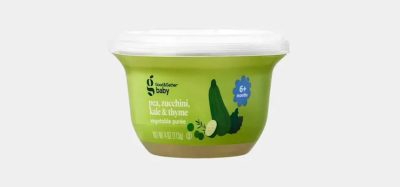Food fraud goes wider than food adulteration
- Like
- Digg
- Del
- Tumblr
- VKontakte
- Buffer
- Love This
- Odnoklassniki
- Meneame
- Blogger
- Amazon
- Yahoo Mail
- Gmail
- AOL
- Newsvine
- HackerNews
- Evernote
- MySpace
- Mail.ru
- Viadeo
- Line
- Comments
- Yummly
- SMS
- Viber
- Telegram
- Subscribe
- Skype
- Facebook Messenger
- Kakao
- LiveJournal
- Yammer
- Edgar
- Fintel
- Mix
- Instapaper
- Copy Link
Posted: 20 June 2017 | John Points | No comments yet
Is there more to the food fraud issue than meets the eye?
In a recent report, I estimated fraud to account for between 5% and 20% of globally reported food incidents, depending on whether you took a cynical or a charitable view of documentation and labelling errors. It is a fair assumption that fraud is significant. As well as examples of widescale fraud that have been uncovered, such as by Interpol’s Operation Opson, there are also macro-economic indicators of fraud; things such as total global imports of Manuka honey exceeding New Zealand’s export, or ground pepper being available at a cheaper price than peppercorns. It is important to remember that ‘fraud’ goes wider than food adulteration. Most reported incidents are the type of paperwork fraud that could happen in any industry; things like forged Inspection Certificates, transportation records, and falsified expiry dates. Solutions need to be wider than just Due Diligence testing. It is important for food manufacturers and retailers to conduct regular forward-looking risk reviews that are focussed on their own supply chains. These should draw in cross-curricula expertise from throughout the company and its suppliers, including buyers, technical managers, laboratory analysts, agronomists and legal advisers. This type of review has traditionally been purely a technical/quality function, but the involvement of commercial/buyers is the key to combating fraud. It is important to also have a routine process for acting upon analytical results.
Unlike chemical contaminants testing, a laboratory fraud-test result is unlikely to be a clear cut ‘Positive’. More likely is an ‘Atypical’ result against a database of authenticated samples, for which there could either be a fraudulent or an innocent explanation. The food industry could take a lead from the pharmaceutical industry, where a documented procedure for dealing with ‘Atypical’ test results is a cornerstone of GMP certification. There is a systematic process for investigating, The food industry needs to keep up to date with available anti-fraud testing methods and technology. Equally, laboratories need to understand how the food industry operates, particularly in terms of supply chains and vulnerabilities, in order to develop appropriate tests. The potential vulnerability should drive the laboratory research and development, rather than laboratories first developing a test and then searching for applications.
Without a close relationship with the food industry, laboratories risk underpinning their test development with an assumed ‘authenticated’ database that does not represent the breadth of authentic samples in the real world. As well as close collaboration between laboratories and the food industry being essential to test for the ‘unknown unknowns’, a continually evolving testing strategy also provides a deterrent effect to would-be fraudsters. And, from a purely practical view, the food industry is a financially low-margin business. It is only by close collaboration with laboratories that we can ensure that the tests we commission are appropriate for our own circumstances, and add value-for-money to our fraud defence.
Much of my current work is in advising food companies on formalising their fraud risk reviews, and the design of analytical test plans that fit within a holistic approach to supply chain verification. This includes looking at trends in commodity prices and supply shortages, and marrying this with emerging trends in published laboratory results. Drawing trends from analytical results, recalls and alerts requires great caution, as generally only the ‘positive’ results are published; there is no context of the number of ‘negatives’. Many laboratory tests for species, variety or origin of food rely upon statistical comparison with a database of known samples. Such databases are extremely expensive to construct and maintain, and naturally lead to the emergence of centres of expertise for particular food types or testing techniques. In order to support industry, it is vital (within the constraints of commercial IP and competition) that these centres of expertise co-ordinate their activities, share information, and operate as a network.
About the author
JOHN POINTS is an independent consultant on chemical safety and authenticity testing of food; how testing fits into an overall supply chain integrity strategy, where (and where not) testing is appropriate, design of testing plans, choice of test methods and laboratories, interpretation of results. He has audited in the EU, China and India. John’s career has included both managing a food testing laboratory and working in UK retail own-brand supply chain assurance, and he is a past and current advisor to UK and EU food regulators. He has seen food integrity issues from all three sides of the fence. If a fence can have three sides.









